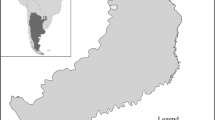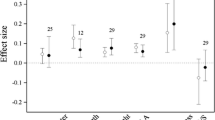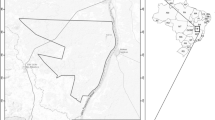Abstract
The canopy light extinction coefficient (K) is a key factor in affecting ecosystem carbon, water, and energy processes. However, K is assumed as a constant in most biogeochemical models owing to lack of in-site measurements at diverse terrestrial ecosystems. In this study, by compiling data of K measured at 88 terrestrial ecosystems, we investigated the spatiotemporal variations of this index across main ecosystem types, including grassland, cropland, shrubland, broadleaf forest, and needleleaf forest. Our results indicated that the average K of all biome types during whole growing season was 0.56. However, this value in the peak growing season was 0.49, indicating a certain degree of seasonal variation. In addition, large variations in K exist within and among the plant functional types. Cropland had the highest value of K (0.62), followed by broadleaf forest (0.59), shrubland (0.56), grassland (0.50), and needleleaf forest (0.45). No significant spatial correlation was found between K and the major environmental factors, i.e., mean annual precipitation, mean annual temperature, and leaf area index (LAI). Intra-annually, significant negative correlations between K and seasonal changes in LAI were found in the natural ecosystems. In cropland, however, the temporal relationship was site-specific. The ecosystem type specific values of K and its temporal relationship with LAI observed in this study may contribute to improved modeling of global biogeochemical cycles.
Similar content being viewed by others
References
Agata W, Kamata E (1979). Ecological characteristics and dry matter production of some native grasses in Japan: 1. Annual growth patterns of Sasa nipponica communities. Journal of Japanese Society of Grassland Science, 25: 103–109
Assmann E (1970). The principles of forest yield study. Oxford: Pergam on Press, 506
Awal M A, Koshi H, Ikeda T (2006). Radiation interception and use by maize/peanut intercrop canopy. Agric Meteorol, 139(1–2): 74–83
Baille A, Gutierrez Colomer R P, Gonzalez-Real M M (2006). Analysis of intercepted radiation and dry matter accumulation in rose flower shoots. Agric Meteorol, 137(1–2): 68–80
Bell M J, Wright G C, Hammer G L (1992). Night temperature affects radiation use efficiency in peanut. Crop Sci, 32(6): 1329–1335
Bell M J, Wright G C, Harch G R (1993). Environmental and agronomic effects on the growth of four peanut cultivars in a subtropical environment. I. Dry matter accumulation and radiation use efficiency. Exp Agric, 29(04): 473–490
Binkley D, Campoe O C, Gspaltl M, Forrester D I (2013). Light absorption and use efficiency in forests: why patterns differ for trees and stands. For Ecol Manage, 288: 5–13
Boonen C, Samson R, Janssens K, Pien H, Lemeur R, Berckmans D (2002). Scaling the spatial distribution of photosynthesis from leaf to canopy in a plant growth chamber. Ecol Modell, 156(2–3): 201–212
Brenner A J, Incoll L D (1997). The effect of clumping and stomatal response on evaporation from sparsely vegetated shrublands. Agric Meteorol, 84(3–4): 187–205
Brown M J, Parker G G (1994). Canopy light transmittance in a chronosequence of mixed-species deciduous forests. Can J Res, 24(8): 1694–1703
Calderini D F, Dreccer M F, Slafer G A (1997). Consequences of breeding on biomass, radiation interception and radiation-use efficiency in wheat. Field Crops Res, 52(3): 271–281
Campbell G S (1986). Extinction coefficients for radiation in plant canopies calculated using an ellipsoidal inclination angle distribution. Agric Meteorol, 36(4): 317–321
Cao M K, Woodward F I (1998). Net primary and ecosystem productions and carbon stocks of terrestrial ecosystems and their response to climate change. Glob Change Biol, 4(2): 185–198
Carretero R, Serrago R A, Bancal M O, Perelló A E, Miralles D J (2010). Absorbed radiation and radiation use efficiency as affected by foliar diseases in relation to their vertical position into the canopy in wheat. Field Crops Res, 116(1–2): 184–195
Ceotto E, Castelli F (2002). Radiation-use efficiency in flue-cured tobacco (Nicotiana tabacum L.): response to nitrogen supply, climatic variability and sink limitations. Field Crops Res, 74(2–3): 117–130
Chapin F S, Matson P A, Mooney H A (2002). Principles of Terrestrial Ecosystem Ecology. New York: Springer, 93
Chapman S C, Ludlow M M, Blamey F P C, Fischer K S (1993). Effect of drought during early reproductive development on growth of cultivars of groundnut (Arachis hypogaea L.): I. Utilization of radiation and water during drought. Field Crops Res, 32(3–4): 193–210
Chen JM, Black TA (1992). Defining leaf area index for non-flat leaves. Plant Cell Environ, 15(4): 421–429
Chen J M, Cihlar J (1996). Retrieving leaf area index of boreal conifer forests using Landsat TM images. Remote Sens Environ, 55(2): 153–162
Chen J M, Menges C H, Leblanc S G (2005). Global mapping of foliage clumping index using multi-angular satellite data. Remote Sens Environ, 97(4): 447–457
Clifton-Brown J C, Neilson B, Lewandowski I, Jones M B (2000). The modelled productivity of Miscanthus _ giganteus (GREEF et DEU) in Ireland. Ind Crops Prod, 12(2): 97–109
Cohen S, Mosoni P, Meron M (1995). Canopy clumpiness and radiation penetration in a young hedgerow apple orchard. Agric Meteorol, 76 (3–4): 185–200
Collino D J, Dardanelli J L, Sereno R, Racca R W (2001). Physiological responses of Argentine peanut varieties to water stress: light interception, radiation use efficiency and partitioning of assimilates. Field Crops Res, 70(3): 177–184
Domingo F, Villagarcía L, Brenner A J, Puigdefábregas J (1999). Evapotranspiration model for semi-arid shrub-lands tested against data from SE Spain. Agric Meteorol, 95(2): 67–84
Esprey L J, Sands P J, Smith C W (2004). Understanding 3-PG using a sensitivity analysis. For Ecol Manage, 193(1–2): 235–250
Ferreira A M, Abreu F G (2001). Description of development, light interception and growth of sunflower at two sowing dates and two densities. Math Comput Simul, 56(4–5): 369–384
Flénet F, Kiniry J R, Board J E, Westgate M E, Reicosky D C (1996). Row spacing effects on light extinction coefficients of corn, sorghum, soybean, and sunflower. Agron J, 88(2): 185–190
Gao X F, Xie Y, Wang X L (2004). Experimental study of the diurnal variation in the extinction coefficient of the winter wheat canopy. Resources Science, 26: 137–140 (in Chinese)
Gao Z, Cao X, Gao W (2013). The spatio-temporal responses of the carbon cycle to climate and land use/land cover changes between 1981-2000 in China. Front Earth Sci, 7(1): 92–102
Gardner F P, Auma E O (1989). Canopy structure, light interception, and yield and market quality of peanut genotypes as influenced by planting pattern and planting date. Field Crops Res, 20(1): 13–29
Giunta F, Motzo R (2004). Sowing rate and cultivar affect total biomass and grain yield of spring triticale (× TriticosecaleWittmack) grown in a Mediterranean-type environment. Field Crops Res, 87(2–3): 179–193
González-Real M M, Baille A, Gutierrez Colomer R P (2007). Leaf photosynthetic properties and radiation profiles in a rose canopy (Rosa hybrida L.) with bent shoots. Sci Hortic (Amsterdam), 114(3): 177–187
Grantz D A, Zhang X J, Massman W J, Delany A, Pederson J R (1997). Ozone deposition to a cotton (Gossypium hirsutum L.) field: stomatal and surface wetness effects during the California Ozone Deposition Experiment. Agric Meteorol, 85(1–2): 19–31
Groeneveld D P (1997). Vertical point quadrat sampling and an extinction factor to calculate leaf area index. J Arid Environ, 36(3): 475–485
Hale S E (2003). The effect of thinning intensity on the below-canopy light environment in a Sitka spruce plantation. For Ecol Manage, 179(1–3): 341–349
Heilman P E, Xie F G (1994). Effects of nitrogen fertilization on leaf area, light interception, and productivity of short-rotation Populus trichocarpa× Populus deltoides hybrids. Can J Res, 24(1): 166–173
Higashide T (2009). Light interception by tomato plants (Solanum lycopersicum) grown on a sloped field. Agric Meteorol, 149(5): 756–762
Hirose T, Werger M J A, Pons T L, van Rheenen J W A (1988). Canopy structure and leaf nitrogen distribution in a stand of Lysimachia vulgaris L. as influenced by stand density. Oecologia, 77(2): 145–150
Hu N, Yao K M, Zhang X C, Lu C G (2011). Effect and simulation of plant type on canopy structure and radiation transmission in rice. Chinese Journal of Rice Science, 25: 535–543 (in chinese)
Hutchison B A, Matt D R, McMillen R T, Gross L J, Tajchman S, Norman J M (1986). The architecture of a deciduous forest canopy in eastern Tennessee, USA. J Ecol, 74(3): 635–646
Jaaffar Z, Gardner F P (1988). Canopy development, yield, and market quality in peanut as affected by genotype and planting pattern. Crop Sci, 28(2): 299–305
Jäggi M, Ammann C, Neftel A, Fuhrer J (2006). Environmental control of profiles of ozone concentration in a grassland canopy. Atmos Environ, 40(28): 5496–5507
Jonckheere I, Fleck S, Nackaerts K, Muys B, Coppin P, Weiss M, Baret F (2004). Review of methods for in situ leaf area index determination Part I. Theories, sensors and hemispherical photography. Agric Meteorol, 121(1–2): 19–35
Jones C A, Kiniry J R (1986). CERES-Maize: A Simulation Model of Maize Growth and Development. Texas: Texas A&M University Press, 1
Jones J W, Barfield C S, Boote K J, Smerage G H, Mangold J (1982). Photosynthetic recovery of peanuts to defoliation at various growth stages. Crop Sci, 22(4): 741–746
Kellomaki S, Oker-Bloom P, Kuuluvainen T (1985). The effect of crown and canopy structure on light interception and distribution in a tree stand. In: Tigerstedt P M A, Puttonen P, Koski V, eds. Crop physiology of forest trees. Helsinki: Helsinki University Press, 107–116
Kiniry J, Johnson M V, Mitchell R, Vogel K, Kaiser J, Bruckerhoff S, Cordsiemon R (2011). Switchgrass leaf area index and light extinction coefficients. Agron J, 103(1): 119–122
Kiniry J R (1998). Biomass accumulation and radiation use efficiency of honey mesquite and eastern red cedar. Biomass Bioenergy, 15(6): 467–473
Kiniry J R, Bean B, Xie Y, Chen P Y (2004). Maize yield potential: critical processes and simulation modeling in a high-yielding environment. Agric Syst, 82(1): 45–56
Kiniry J R, Simpson C E, Schubert A M, Reed J D (2005). Peanut leaf area index, light interception, radiation use efficiency, and harvest index at three sites in Texas. Field Crops Res, 91(2–3): 297–306
Kiniry J R, Tischler C R, van Esbroeck G A (1999). Radiation use efficiency and leaf CO2 exchange for diverse C4 grasses. Biomass Bioenergy, 17(2): 95–112
Kiniry J R, Williams J R, Gassman P W, Debaeke P (1992). A general, process-oriented model for two competing plant species. Trans ASAE, 35: 801–810
Kubota F, Matsuda Y, Agata W, Nada K (1994). The relationship between canopy structure and high productivity in napier grass (Pennisetum purpureum Schumach). Field Crops Res, 38(2): 105–110
Lantinga E A, Nassiri M, Kropff M J (1999). Modelling and measuring vertical light absorption within grass-clover mixtures. Agric Meteorol, 96(1–3): 71–83
Li H G, Wen Z H, Huang M R, Wang M X (1997). A genetic study on characteristics of crown light interception in Populus deltoids. Can J Res, 27(9): 1465–1470
Liu S, Riekerk H, Gholz H L (1997). Leaf litterfall, leaf area index, and radiation transmittance in cypress wetlands and slash pine plantations in north-central Florida. Wetlands Ecol Manage, 4(4): 257–271
Liu Y, Ju W, He H, Wang S, Sun R, Zhang Y (2013). Changes of net primary productivity in China during recent 11 years detected using an ecological model driven by MODIS data. Front Earth Sci, 7(1): 112–127
Lunagaria M M, Shekh A M (2006). Radiation interception, light extinction coefficient and leaf area index of wheat (Triticum aestivum L.) crop as influenced by row orientation and row spacing. J Agric Sci, 2: 43–54
Maass J M, Vose J M, Swank W T, Martinez-Yrizar A (1995). Seasonal changes of leaf area index (LAI) in a tropical deciduous forest in west Mexico. For Ecol Manage, 74(1–3): 171–180
Matsuda Y, Kubota F, Agata W (1991). Analytical study on high productivity in Napier grass (Pennisetum purpureum Schumach): 1. Comparison of the characteristics of dry matter production between Napier grass and corn plants. Journal of Japanese Society of Grassland Science, 37: 150–156
McCaughey J H, Davies J A (1974). Diurnal variation in net radiation depletion within a corn crop. Boundary-Layer Meteorol, 5(4): 505–511
McCrady R L, Jokela E J (1998). Canopy dynamics, light interception, and radiation use efficiency of selected loblolly pine families. For Sci, 44: 64–72
Miyaji K, Silva W S D, Paulo T A D (1997). Longevity of leaves of a tropical tree, Theobroma cacao, grown under shading, in relation to position within the canopy and time of emergence. New Phytol, 135(3): 445–454
Monsi M, Saeki T (1953). Über den Lichtfaktor in den Pflanzengesellschaften und seine Bedeutung für die Stoffproduktion. Jpn J Bot, 14: 22–52 (in German)
Montero J I, Antón A, Muñoz P, Lorenzo P (2001). Transpiration from geranium grown under high temperatures and low humidities in greenhouses. Agric Meteorol, 107(4): 323–332
Morgan J A, Brown R H (1983). Photosynthesis and growth of bermudagrass swards. I. carbon dioxide exchange characteristics of sward mowed at weekly and monthly intervals. Crop Sci, 23: 347–352
Mu Q, Zhao M, Running SW (2011). Improvements to a MODIS global terrestrial evapotranspiration algorithm. Remote Sens Environ, 115(8): 1781–1800
O’Connell M G, O’Leary G J, Whitfield D M, Connor D J (2004). Interception of photosynthetically active radiation and radiation-use efficiency of wheat, field pea and mustard in a semi-arid environment. Field Crops Res, 85(2–3): 111–124
Olesen J E, Hansen P K, Berntsen J, Christensen S (2004). Simulation of above-ground suppression of competing species and competition tolerance in winter wheat varieties. Field Crops Res, 89(2–3): 263–280
Reifsnyder W E, Furnival G M, Horowitz J L (1971). Spatial and temporal distribution of solar radiation beneath forest canopies. Agric Meteorol, 9: 21–37
Rotenberg E, Yakir D (2011). Distinct patterns of changes in surface energy budget associated with forestation in the semiarid region. Glob Change Biol, 17(4): 1536–1548
Rouphael Y, Colla G (2005). Radiation and water use efficiencies of greenhouse zucchini squash in relation to different climate parameters. Eur J Agron, 23(2): 183–194
Runyon J, Waring R H, Goward S N, Welles J M (1994). Environmental limits on net primary production and light-use efficiency across the Oregon Transect. Ecol Appl, 4(2): 226–237
Sadras O V (1996). Cotton responses to simulated insect damage: radiation-use efficiency, canopy architecture and leaf nitrogen content as affected by loss of reproductive organs. Field Crops Res, 48(2–3): 199–208
Sampson D A, Allen H L (1998). Light attenuation in a 14-year-old loblolly pine stand as influenced by fertilization and irrigation. Trees (Berl), 13(2): 80–87
Sitch S, Smith B, Prentice I C, Arneth A, Bondeau A, Cramer W, Kaplan J O, Levis S, Lucht W, Sykes M T, Thonicke K, Venevsky S (2003). Evaluation of ecosystem dynamics, plant geography and terrestrial carbon cycling in the LPJ dynamic global vegetation model. Glob Change Biol, 9(2): 161–185
Smith F W, Sampson D A, Long J N (1991). Comparison of leaf area index estimates from tree allometrics and measured light interception. For Sci, 37: 1682–1688
Teixeira E I, Brown H E, Meenken E D, Moot D J (2011). Growth and phenological development patterns differ between seedling and regrowth lucerne crops (Medicago sativa L.). Eur J Agron, 35(1): 47–55
Tesfaye K, Walker S, Tsubo M (2006). Radiation interception and radiation use efficiency of three grain legumes under water deficit conditions in a semi-arid environment. Eur J Agron, 25(1): 60–70
Thornton P E, Rosenbloom N A (2005). Ecosystem model spin-up: estimating steady state conditions in a coupled terrestrial carbon and nitrogen cycle model. Ecol Modell, 189(1–2): 25–48
Wang D, Shannon M C, Grieve C M (2001). Salinity reduces radiation absorption and use efficiency in soybean. Field Crops Res, 69(3): 267–277
Wang J B, Liu J Y, Cao M K, Liu Y F, Yu G R, Li G C, Qi S H, Li K R (2011). Modelling carbon fluxes of different forests by coupling a remote sensing model with an ecosystem process model. Int J Remote Sens, 32(21): 6539–6567
Wang W M, Li Z L, Su H B (2007). Comparison of leaf angle distribution functions: effects on extinction coefficient and fraction of sunlit foliage. Agric Meteorol, 143(1–2): 106–122
Waring R H, Schlesinger W H (1985). Forest Ecosystems: Concepts and Management. San Diego: Academic Press, 263–276
Wheeler T R, Ellis R H, Hadley P, Morison J I L (1995). Effects of CO2, temperature and their interaction on the growth, development and yield of cauliflower (Brassica oleracea L. botrytis). Sci Hortic (Amsterdam), 60(3–4): 181–197
White M A, Thornton P E, Running S W, Nemani R R (2000). Parameterization and sensitivity analysis of the BIOME-BGC terrestrial ecosystem model: net primary production controls. Earth Interact, 4(3): 1–85
Xiao X M, Zhang Q Y, Braswella B, Urbanskib S, Boles S, Wofsy S, Moore B III, Ojima D (2004). Modeling gross primary production of temperate deciduous broadleaf forest using satellite images and climate data. Remote Sens Environ, 91(2): 256–270
Zhao M, Running S W (2010). Drought-induced reduction in global terrestrial net primary production from 2000 through 2009. Science, 329(5994): 940–943
Author information
Authors and Affiliations
Corresponding authors
Rights and permissions
About this article
Cite this article
Zhang, L., Hu, Z., Fan, J. et al. A meta-analysis of the canopy light extinction coefficient in terrestrial ecosystems. Front. Earth Sci. 8, 599–609 (2014). https://doi.org/10.1007/s11707-014-0446-7
Received:
Accepted:
Published:
Issue Date:
DOI: https://doi.org/10.1007/s11707-014-0446-7




